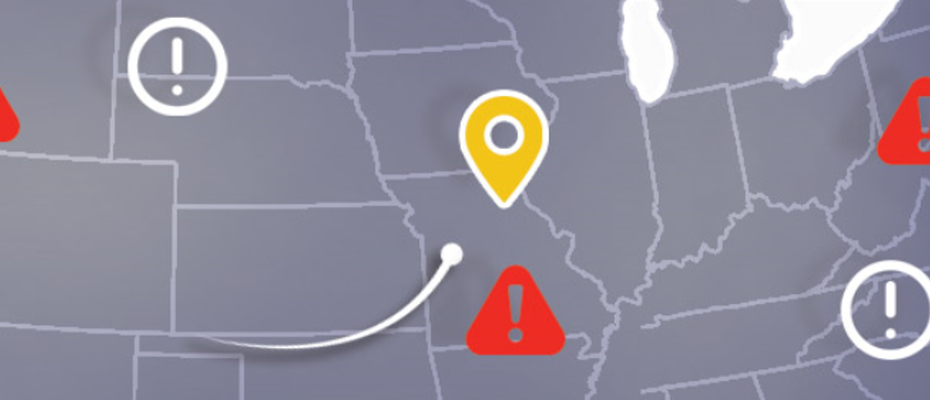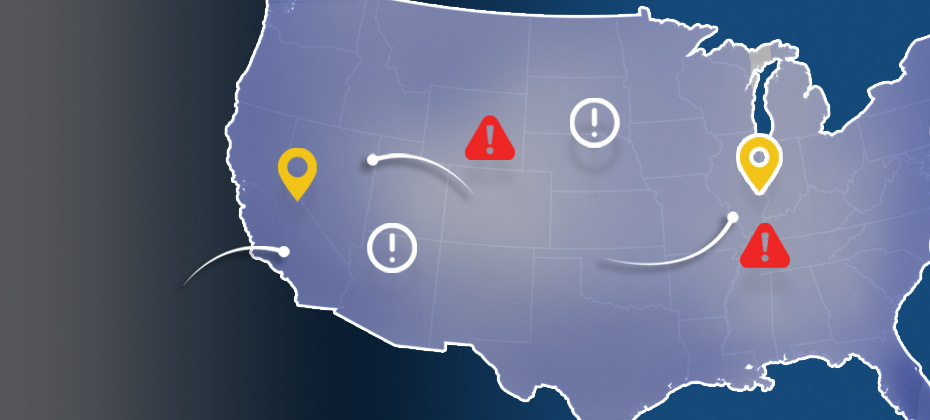All posts by Guest Contributor

When financial planners and tax advisors meet with clients to review their portfolios, chances are they don't go over their credit reports often. Maybe they never do. Kiplinger’s estimates less than half of professional financial advisors take the time to review credit reports with clients. But taking this step is critical to understanding a person’s complete financial situation and creating a realistic plan. Prepare for Future Opportunities Clients may have all the credit they need at the moment, but if their credit score is mediocre or low, they might end up paying for it in the future. Just when they want to refinance a loan, buy more insurance, apply for a dream job or buy a business, they may discover their credit score is an obstacle. Check for Errors Credit bureaus collect billions of data points from millions of businesses each year, and it’s important to check a credit report for accuracy. If there are errors in a client’s file, he or she may be unfairly penalized. Keep in mind that nearly every company checks credit reports to determine who to do business with. Potential employers, business partners and insurance companies give credit files a look before deciding whether or not to make an offer to a person. Awareness Mistakes aren't the only factor leading to a low credit score. Too many hard inquiries, a maxed-out credit card or a number of small loans that could be paid off all cost credit points. Reviewing a credit report is a great way to help clients see the real impact their habits have on their financial life, and they could realize a significant rise in their credit score with little effort. Stand Out in the Crowd Even if a person has an exceptional credit report, a financial or tax advisor will gain credibility by reviewing their information with them. Doing so demonstrates out-of-the-box thinking and concern for a person’s financial health. Let's see a robo-advisor do this. Financial professionals can easily and securely review their clients’ credit reports online. Ready to understand your client’s complete financial situation? Try out our online solution at no cost to you. Interested in integrating with your existing financial or tax planning software? Learn more about integration options with Experian’s API.

Millennials are coming of age and experiencing big life moments — college graduation, their first job, getting married and moving out. But what about buying ahome? Here are some things we know: Millennials are 75 million strong 75% say homeownership is a long-term goal Millennials are now the largest living generation. Are you equipped with the right strategies and tools to serve their lending needs? >>Webinar: Are Millenials Mortgage-Ready?

As we approach the one-year anniversary of the EMV liability shift, we have seen an increase in e-commerce fraud — to the tune of 15% higher than last year. Additional insights from Experian’s biannual analysis on e-commerce fraud include: 44% of e-commerce billing fraud came from Florida, California and New York* 52% of e-commerce shipping fraud came from Florida, New York and California* Miami, Fla., is the most dangerous city in the United States for e-commerce merchants* As fraudsters continue to perpetrate card-not-present fraud, ensure you are prepared. You’ll be thankful if fraudsters come calling. >> E-commerce Attack Rates

In this new Telephone Consumer Protection Act (TCPA) era, calling your customers isn’t a thing of the past. It’s still okay to reach out to your clients by phone, whether to offer a new product or collect on an overdue bill. But strict compliance with TCPA rules is critical for any business that contacts customers by phone. Some of the very best ways you can protect yourself from TCPA exposure is to follow four steps when creating your dialing strategy: Customer consent: It’s important to maintain and update your customers’ contact preferences and consent to call them. Simply having a phone number on an application isn’t sufficient. Companies are required to have written permission, such as “I consent to calling my cell phone when there’s a problem …” Remember, permission may only be granted by the party who subscribes to the cellular service or who regularly uses that cell phone number. Landline or wireless?: Your database should also include the phone type for the telephone numbers you have for your customers. The dialing rules differ depending on the phone type, so it’s critical to know the type of phone you are calling or texting. Verify ownership: Ownership of cell phones should especially be validated to ensure the number hasn’t been reassigned and that the person who gave consent still owns the phone. One call can be made to a reassigned number with no liability, assuming you have no knowledge the number has changed. Repeating the action could lead to fines from $500 to $1,500 per infraction. Scrub Your Database: Have practices in place to remove any confirmed reassigned phone numbers from your database. This will help to improve your right-party contact rate and save you from potential TCPA headaches. No one disagrees that calling cell numbers is a risky business, but it can be done if you set the proper workflow in motion. Click here to learn more about Experian solutions that will help to reduce your TCPA compliance risk.

Leasing continued its strong growth as the share of new vehicles leased jumped from 26.9% in Q2 2015 to a record high of 31.4% in Q2 2016. As vehicle prices continue to rise, used vehicle loans also set new records. The average used vehicle loan reached an all-time high of $19,101 in Q2 2016, up from $18,671 in Q2 2015. Used vehicle loans accounted for 55.6% of all vehicle loans in Q2 2016. Want to capitalize on this growth? Analytics can help you target borrowers who are creditworthy and in the market for an auto loan or lease. >>Video: Auto Acquisition Strategies

Experian analyzed millions of e-commerce transactions from the first six months of 2016 to identify the latest fraud attack rates across the United States for both shipping and billing locations. As we approach the one-year anniversary of the EMV liability shift, the 2016 e-commerce fraud attack rates look to be at least 15 percent higher than last year’s total. Experian analyzed millions of e-commerce transactions from the first six months of 2016 to identify the latest fraud attack rates across the United States for both shipping and billing locations. Billing fraud rates are associated with the address of the purchaser. Shipping fraud rates are associated with the address where purchased goods are sent. As we approach the one-year anniversary of the EMV liability shift, the 2016 e-commerce fraud attack rates look to be at least 15 percent higher than last year’s total. E-commerce fraud is often an indicator that other fraud activities have already happened, whether a credit card has been stolen, identity fraud has occurred, or personal credentials have been compromised.

Historically, the introduction of EMV chip technology has resulted in a significant drop in card-present fraud, but a spike in card-not-present (CNP) fraud. CNP fraud accounts for 60% to 70% of all card fraud in many countries and is increasing. Merchants and card issuers in the United States likely will see a rise in CNP fraud as EMV migration occurs — although it may be more gradual as issuers and merchants upgrade to chip-based cards. As fraud continues to evolve, so too should your fraud-prevention strategies. Make a commitment to stay abreast of the latest fraud trends and implement sophisticated, cross-channel fraud-prevention strategies. >>Protecting Growth Ambitions Against Rising Fraud Threats

Unfortunately, identity theft can happen to anyone and has far-reaching consequences for its victims. According to the US Department of Justice (DOJ)’s most recent study, 17.6 million people in the US experience some form of identity theft each year. This includes activities such as fraudulent credit card transactions or personal information being used to open unauthorized accounts. The most obvious consequence that identity theft victims encounter is financial loss, which comes in two forms: direct and indirect. Direct financial loss refers to the amount of money stolen or misused by the identity theft offender. Indirect financial loss includes any outside costs associated with identity theft, like legal fees or overdraft charges. The DOJ’s study found that victims experienced a combined average loss of $1,343. In total, identity theft victims lost a whopping $15.4 billion in 2014. Beyond money lost, identity theft can negatively impact credit scores. While credit card companies detect a majority of credit card fraud cases, the rest can go undetected for extended periods of time. A criminal’s delinquent payments, cash loans, or even foreclosures slowly manifest into weakened credit scores. Victims often only discover the problem when they are denied for a loan or credit card application. Last year, Experian found that these types of fraud take the longest time to resolve. Identity theft doesn’t just impact victims financially; it also often takes a significant emotional toll. A survey from the Identity Theft Research Center found that 69 percent felt fear for their personal financial security, and 65 percent felt rage or anger. And, almost 40 percent reported some sleep disruption. These feelings increased over time when victims were unable to settle the issue on their own, according to the report, which can result in problem as work or school, and add stress to relationships with friends and family. Thankfully, consumers are getting smarter about the best ways to protect their information, like using monitoring services or following security best practices. How are you protecting yourself against identity theft? Learn more about our Identity Protection Services

This summer, the Consumer Financial Protection Bureau (CFPB) took a significant step toward reforming the regulatory framework for the debt collection industry. The focus is fueled in part by the large number of consumer complaints the CFPB receives about the debt collection market — roughly 35% of total complaints. Here are highlights from the recent CFPB proposal: Data quality: Collectors would be required to substantiate claims that a consumer owes a debt in order to begin collection Communication frequency: Collectors would be limited to six emails, phone calls or mailings per week, including unanswered calls and voice mails Waiting period: Reporting a person’s debt would be prohibited unless the collector has communicated directly with the consumer first The CFPB said its proposal will affect only third-party debt collectors; however, it may consider a separate set of proposals for first-party collectors. >> Insights into CFPB's latest debt collection proposal

The first six months of 2016 has shown that the total credit card limits among the subprime and deep subprime credit range totaled $6.4 billion, the highest amount reported for those groups in the last five years. Our Q2 2016 Experian-Oliver Wyman Market Intelligence Report webinar will analyze the trends impacting consumer credit decisions in the current economy. The data is from the latest Experian Market Intelligence Brief report.

Fraudsters are more sophisticated than ever. Just when you think you’ve filled the gaps, a new fraud threat emerges. Here are five strategic recommendations from Juniper Research for businesses that accept online payments: Invest in top-of-the-range fraud detection and prevention solutions Implement mobile security as soon as possible Develop a fraud prevention investment strategy Empower cross-industry collaboration to reduce online fraud effectively Fraud continues to evolve from individual rogues to organized global networks. Is your fraud prevention strategy keeping up? >>Juniper Research: Online payment fraud whitepaper

Did you know that identities can shift (for better or worse) in just 30 days? To succeed in today’s multichannel, mobile environment, businesses must have a broader, more dynamic identity management strategy that includes: Identity proofing: Point-in-time verification (e.g., account opening) Authentication: Ongoing verification (e.g., account login) Identity management: Continual monitoring throughout the Customer Life Cycle Minimize your identity fraud risk, increase customer engagement and provide a satisfying customer experience by shifting to a strategy focused on identity relationship management. >>The three pillars of identity relationship management

At the end of July, the Consumer Financial Protection Bureau (CFPB) took a significant step toward reforming the regulatory framework for the debt collection and debt buying industry by announcing an outline of proposals under consideration. The proposals will now be considered by a small business review panel before the CFPB announces a proposed rule for wider industry comment. The CFPB said its proposals will affect only third-party debt collectors pursuant to the Fair Debt Collection Practices Act (FDCPA). However, the CFPB signaled it may consider a separate set of proposals for first-party collectors. The collections industry has long been a focus of the CFPB. In 2012, the bureau designated larger market participants in the debt collections marketplace and placed some of these entities under supervision. In 2013, the CFPB released an Advanced Notice of Proposed Rulemaking covering collections. The focus on debt collection is fueled in part by the large number of consumer complaints it receives about the debt collection market (roughly 35% of total complaints). Moreover, the CFPB’s proposals build upon some of the regulatory and enforcement priorities that the CFPB and Federal Trade Commission have pursued for several years around data quality, consumer communication and disclosures. Here are some of the key takeaways for third party debt collectors from the CFPB’s proposals: Address data quality: Collectors would be required to substantiate claims that a consumer owes a debt in order to begin a collection. Collectors would also be required to pass on information provided by consumers in the course of collections activity. New Validation Notice and Statement of Rights: The CFPB’s draft outline would update the information provided to consumers through the FDCPA validation notice, as well as require disclosure of a consumer statement of rights. Changes to frequency of communications: Debt collectors would be limited to six emails, phone calls or mailings per week, including unanswered calls and voicemails. After reaching the consumer, the debt collector would be allowed either one contact or three attempted contacts per week. There would also be a waiting period of 30 days before contacting the family of a debtor who has died. New disclosures on “out of statute” debt and litigation: In the outline, CFPB proposes having debt collectors provide new disclosures to consumers regarding the possibility of litigation and whether the debt is beyond the statute of limitations. Waiting period before sending collection accounts to a consumer reporting agency: Reporting a person’s debt would be prohibited under the draft outline unless the collector has first communicated directly with the consumer about the debt. The CFPB will next hear comments from a panel of small businesses in the industry, complete an analysis of how its proposals would impact small businesses, and take written comments from the public. Following those steps, the agency will issue a proposed rule for comment.

Consumer card balance transfer activity is estimated to be $35 billion to $40 billion a year. How do lenders identify these consumers before they make transfers? By using trended data. While extremely valuable, trended data is very complex and difficult to work with. For example, with 24 months of history on five fields, a single account includes 120 data points. That’s 720 data points for a consumer with six accounts on file and 72 million for a file with 100,000 consumers — not to mention the other data fields in the file. Trended data allows lenders to effectively predict where a consumer is going based on where they’ve been. And that can make all the difference when it comes to smart lending decisions. >>What is trended data?

Experian has been selected as one of the leading players in the fraud detection and prevention space in Juniper Research’s Online Payment Fraud strategies report.